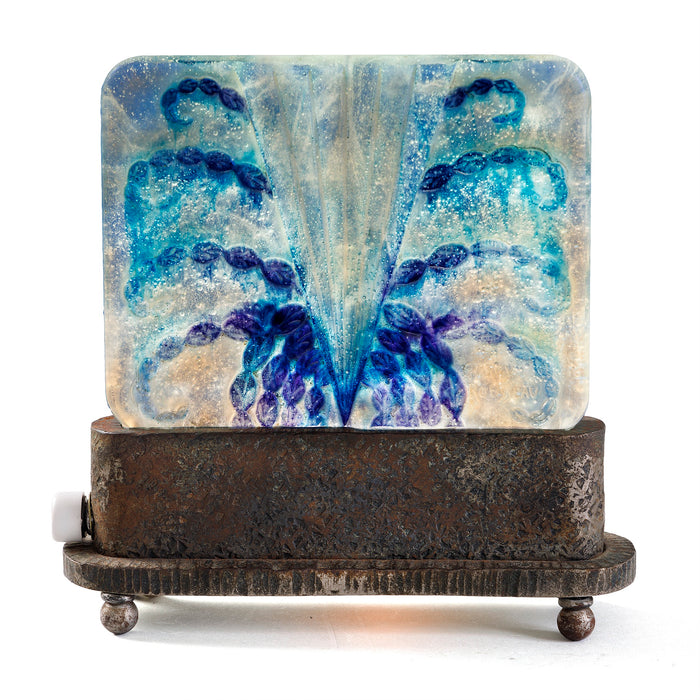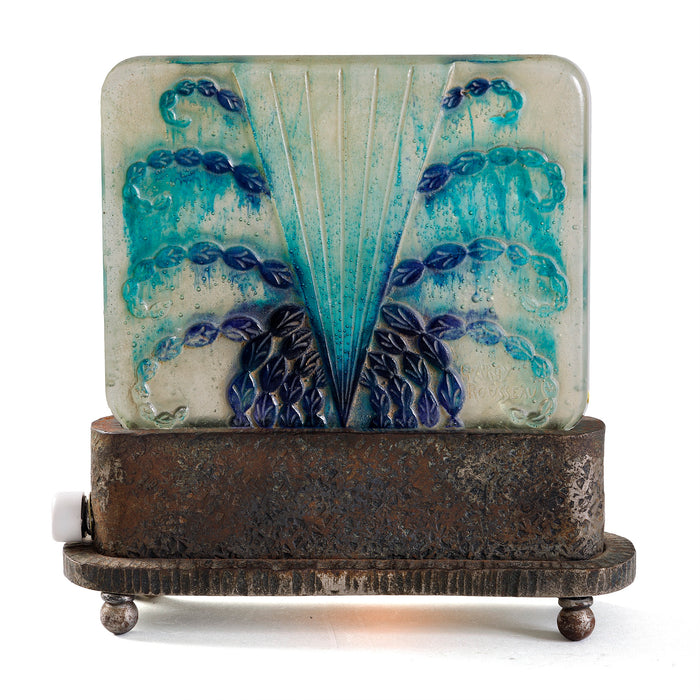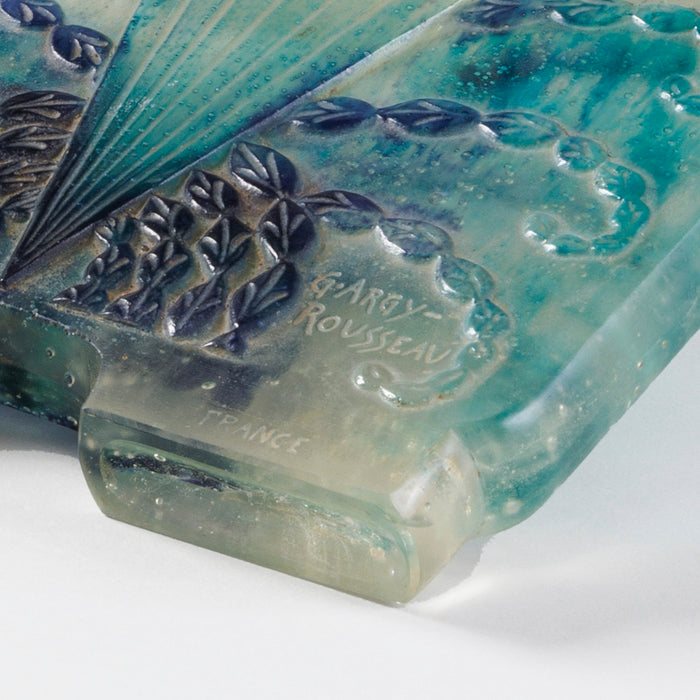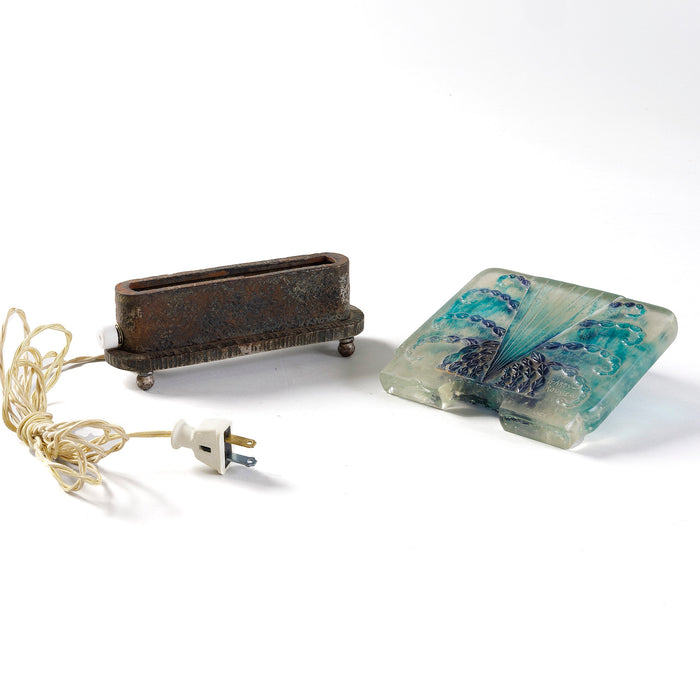
Gabriel Argy-Rousseau Pâte de Verre "Algues" Night Light
$15,000
Argy Rousseau’s Algues nightlight displays the Fucus, a brown algae harvested in Brittany, flanking a spray of water in an arresting teal and amethyst. The seaweed harvest was historically carried out by “goemoniers,” laborers who harvested seaweed with donkey carts for fuel or fertilizer. The subject matter was popular among painters of the Realism movement, who often depicted Britannian labor and religious practices.
Notably, marine Biologist Ernst Haeckel dedicated a plate to brown algae in his widely referenced 1904 edition of Kunstformen der Natur. Argy Rousseau has exaggerated the form of the receptacles, the reproductive organ of the seaweed, stylizing the marine species like the more traditional epis de ble (sheaf of wheat). Like many pieces of Art Deco lighting, the structure of the design is based on a fountain, the central attraction to the 1925 World Fair, in which the centerpiece was a 45-foot glass fountain by René Lalique.
- Product Details
- Curator's Notes
Item #: YEL-21278
Artist: Gabriel Argy-Rousseau
Country: France
Circa: 1930
Dimensions: 7.375" height, 7" width
Materials: Pâte de verre, translucent glass, Wrought Iron
Signed: signed in the mold "G. Argy-Rousseau" and "FRANCE"
Literature: Bloch-Dermant Janine Gabriel Argy-Rousseau and Yves Delaborde. 1991. G. Argy-Rousseau : Glassware As Art : With a Catalogue Raisonné of the Pâtes De Verre. London: Thames and Hudson. p.141
Gabriel Rousseau adopted the suffix 'Argy' in honor of his wife Marianne Argyriadès. She was his best friend's sister. They all shared a love of Greco-Roman and Egyptian antiquity. Argy-Rousseau was interested in many things, studied at the École de Sèvres, but also completed an engineering degree. Throughout his life, he conducted research in areas as diverse as dental porcelain and color photography. In his private life he always surrounded himself with creative personalities, including Henri Cros, who had long been known for his glass works using the 'pâte-de-verre' technique. Argy-Rousseau began to work successfully with the material even before the First World War, after the war he founded a glass factory that had 20 employees at its peak. He developed his own technique for producing his ideas: Argy-Rousseau first modeled his sketched idea in plaster, which was then covered with wax. A refractory hollow mold consisting of several parts was then molded from this model in several work steps. He even produced his own glass. It was crushed into powder and colored by the addition of metal oxides. With the help of fine brushes, the now liquid glass mass, which had been washed several times, was applied precisely to the walls of the refractory mould. Two more layers followed, one after the other, to create strength and at the same time prevent air bubbles from forming. The last layer was resin to further fix the pate de verre. The model was then placed upside down in a wood-fired oven, where the piece was then fired at high temperatures. After cooling, the mold was removed, the now solid object cleaned with acid and the last bumps polished off with a wheel. This is how these wonderful, transparent, at the same time colorful, delicate-looking objects came into being.



